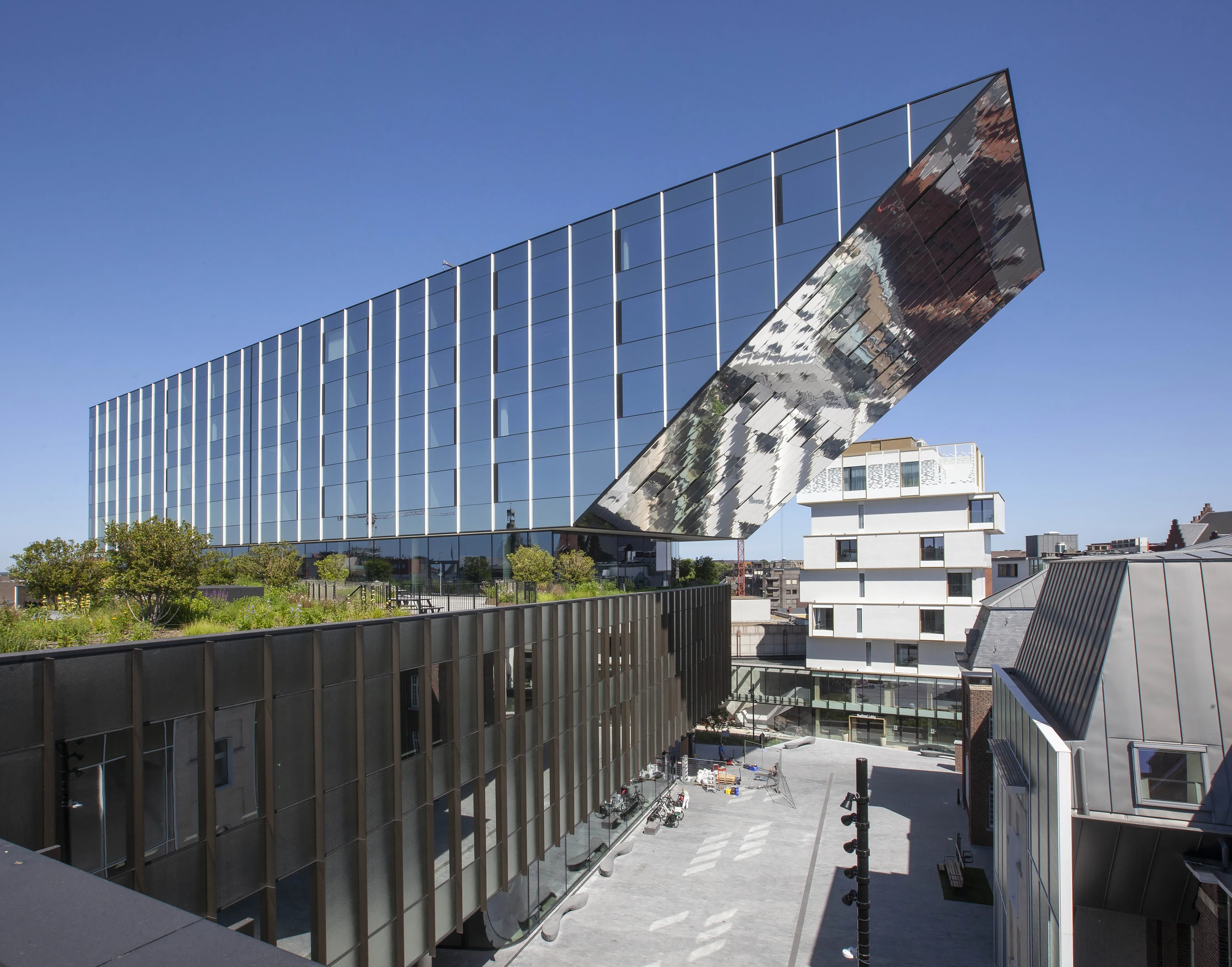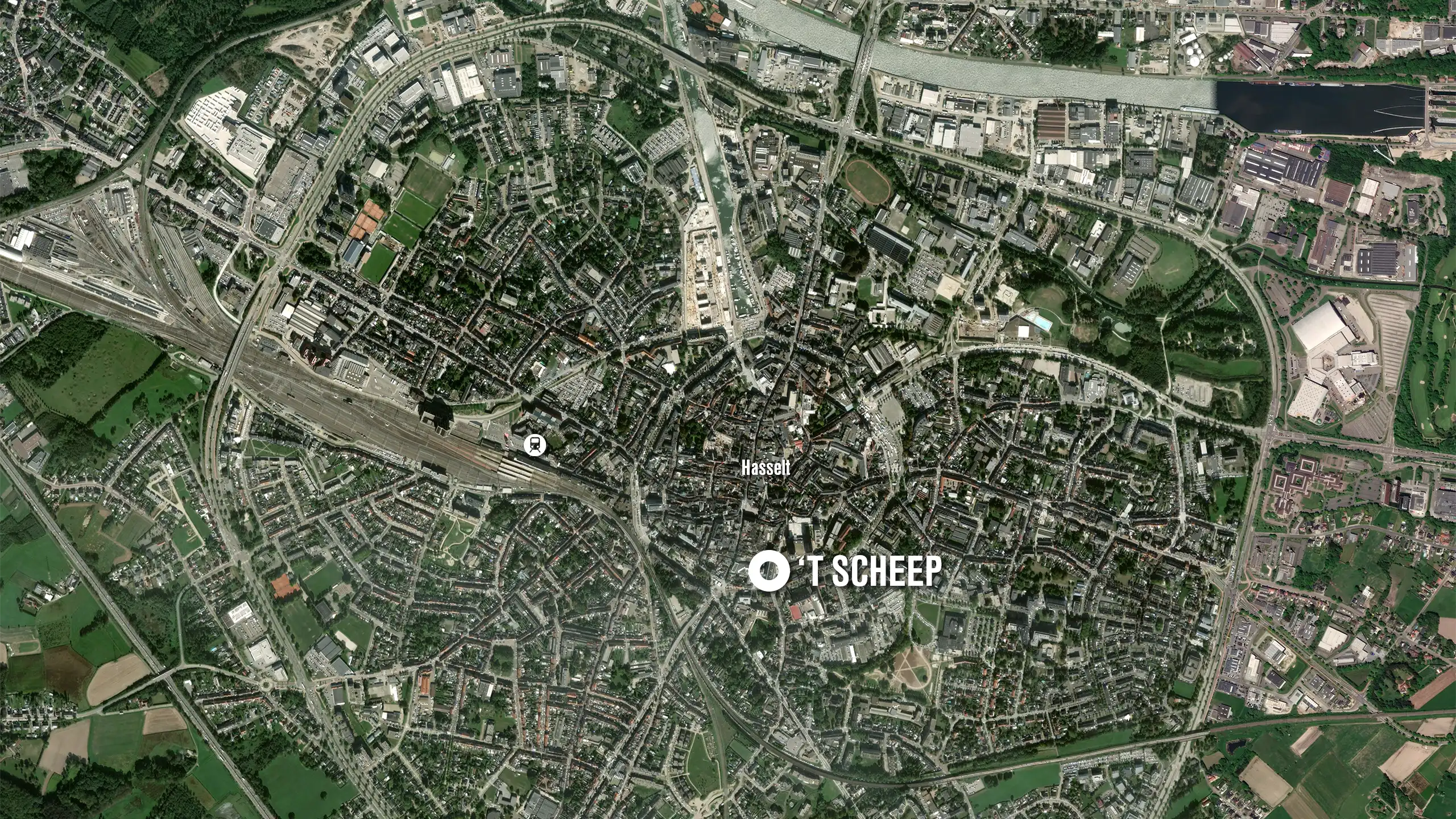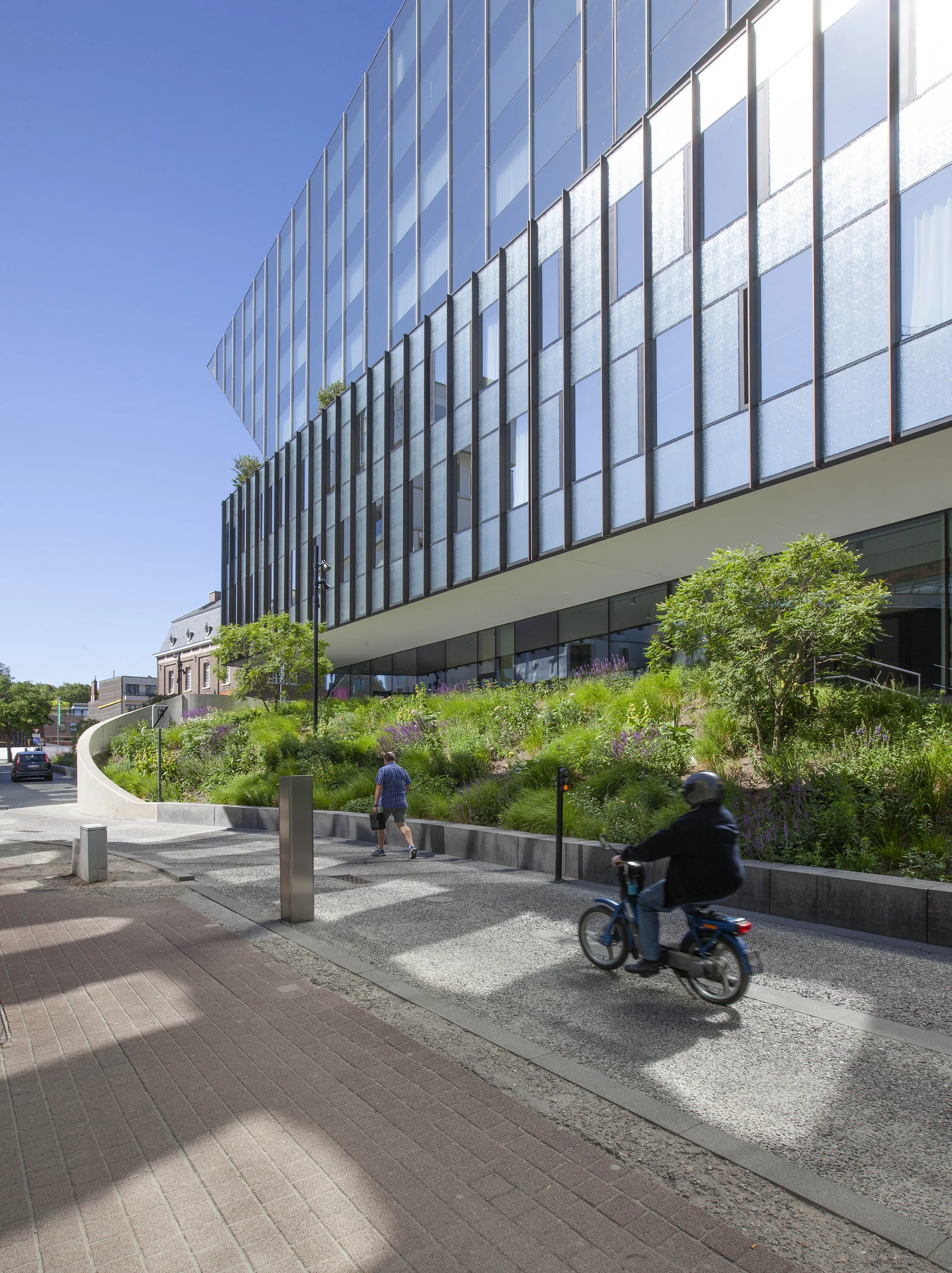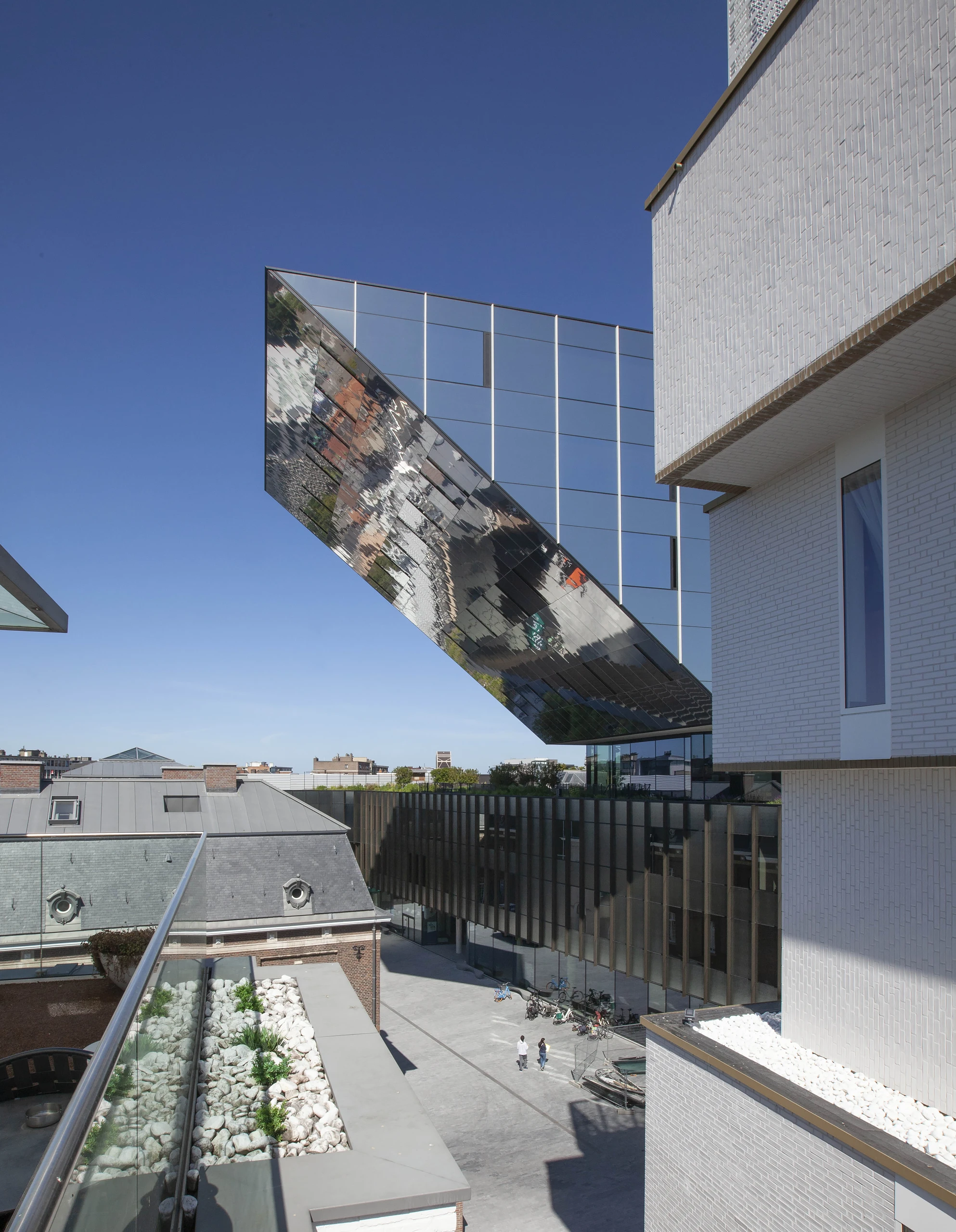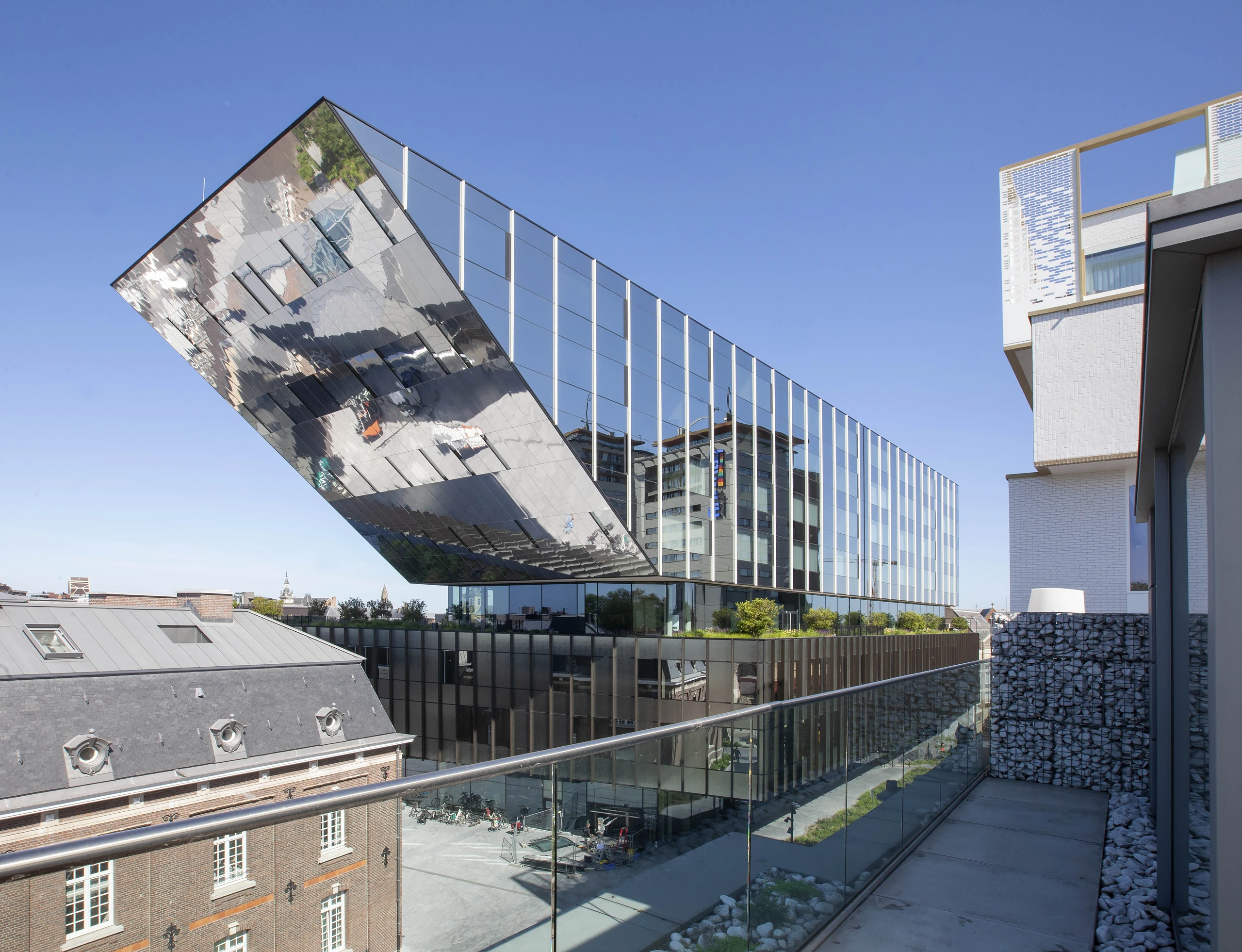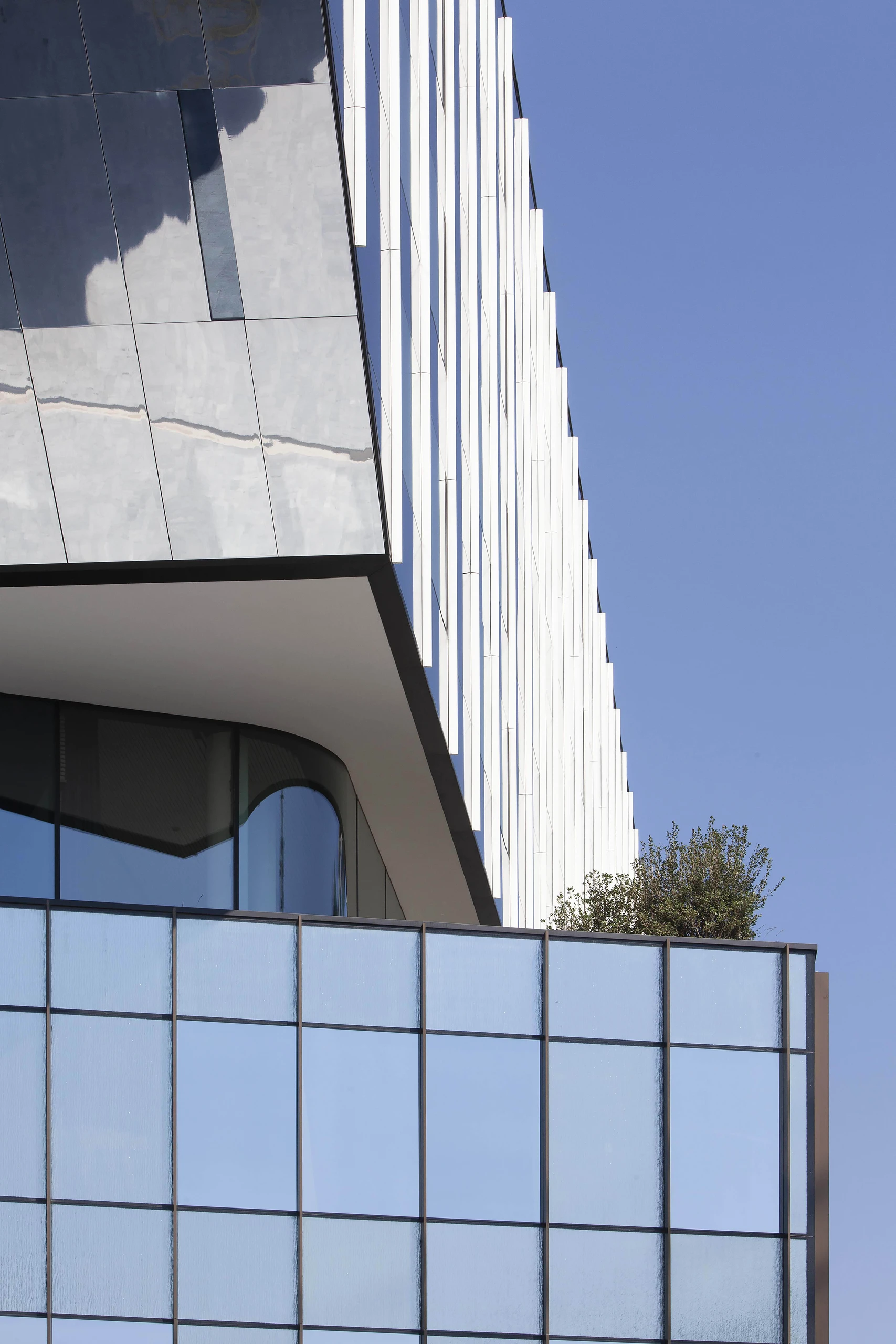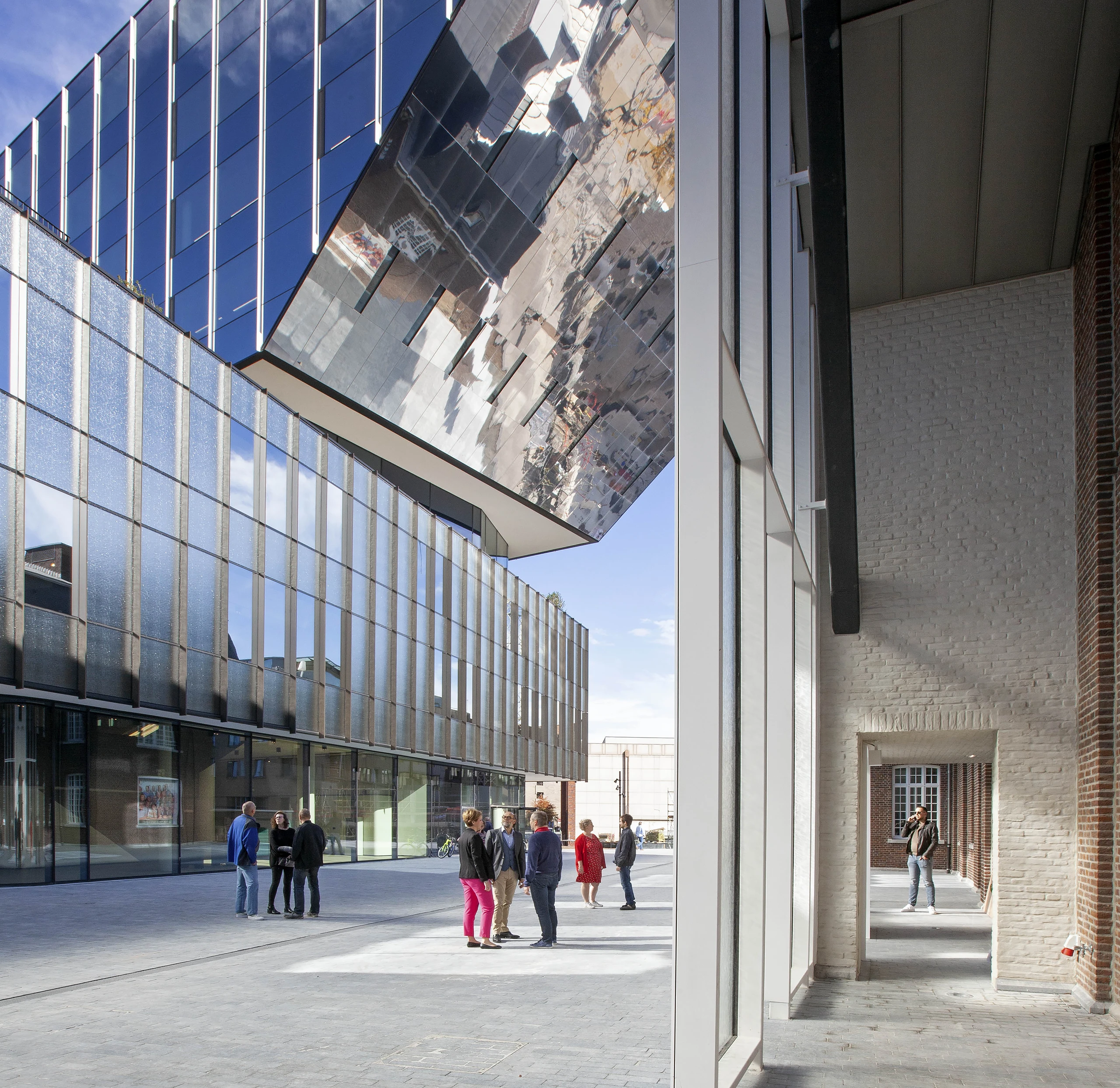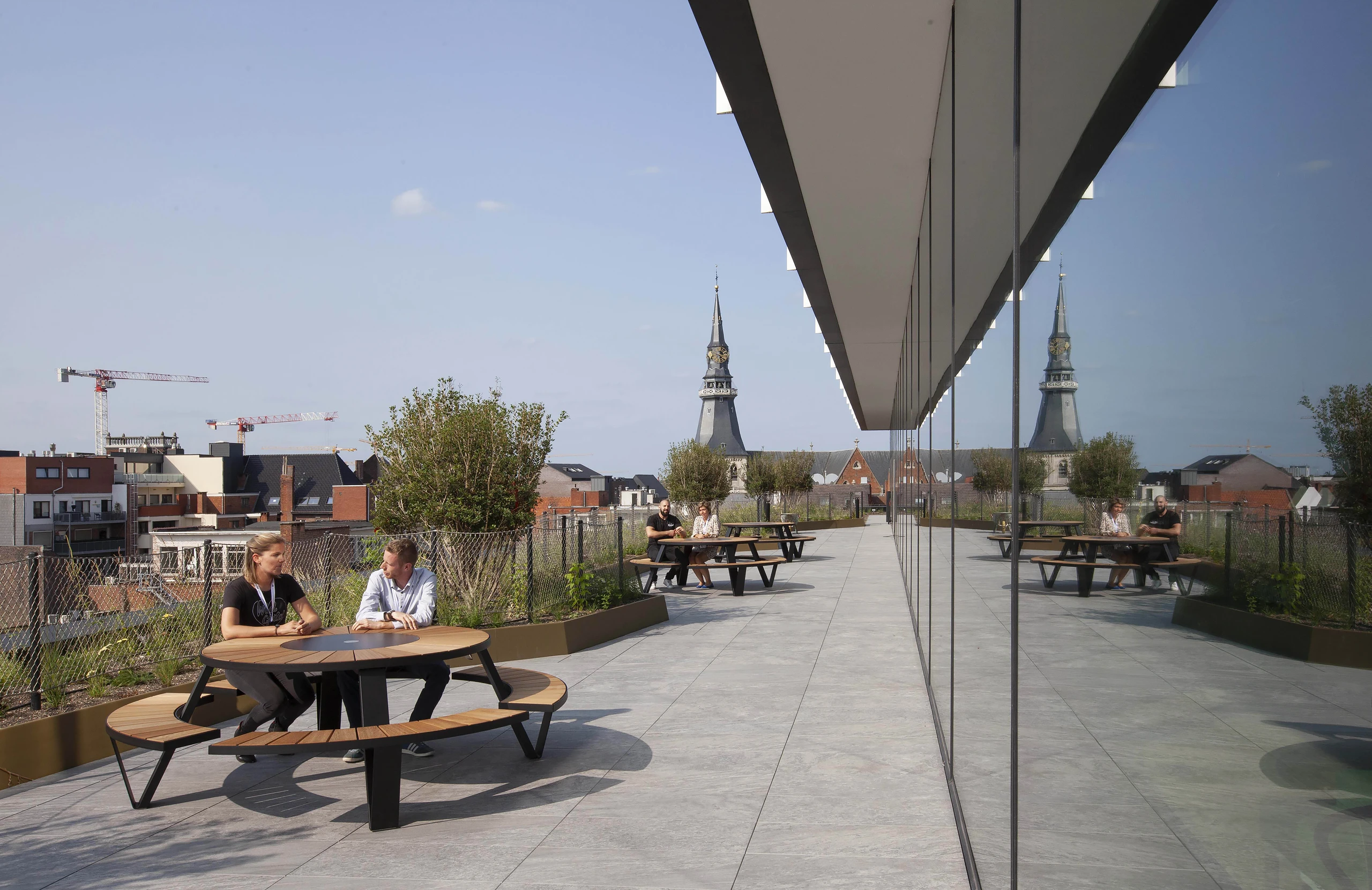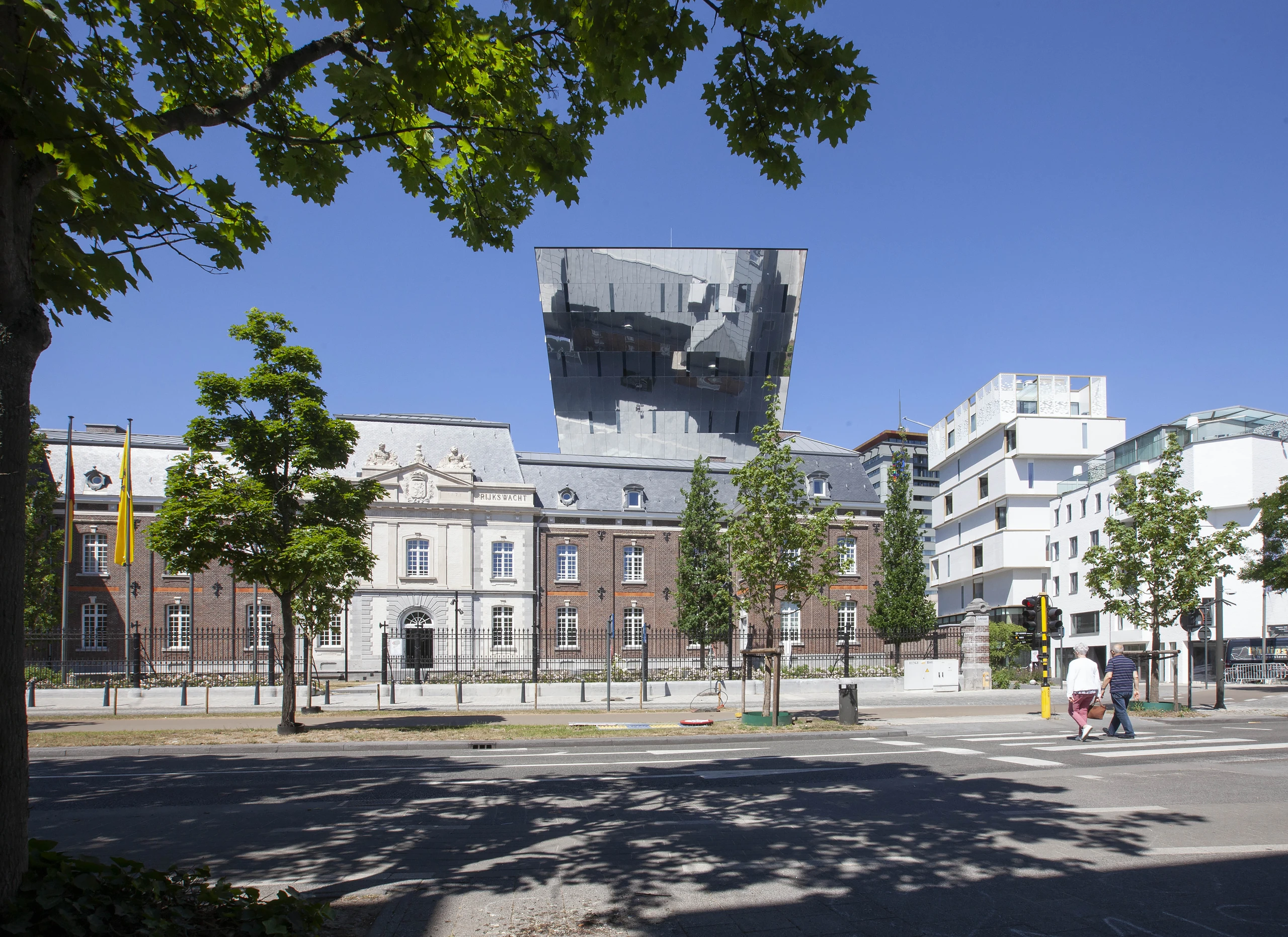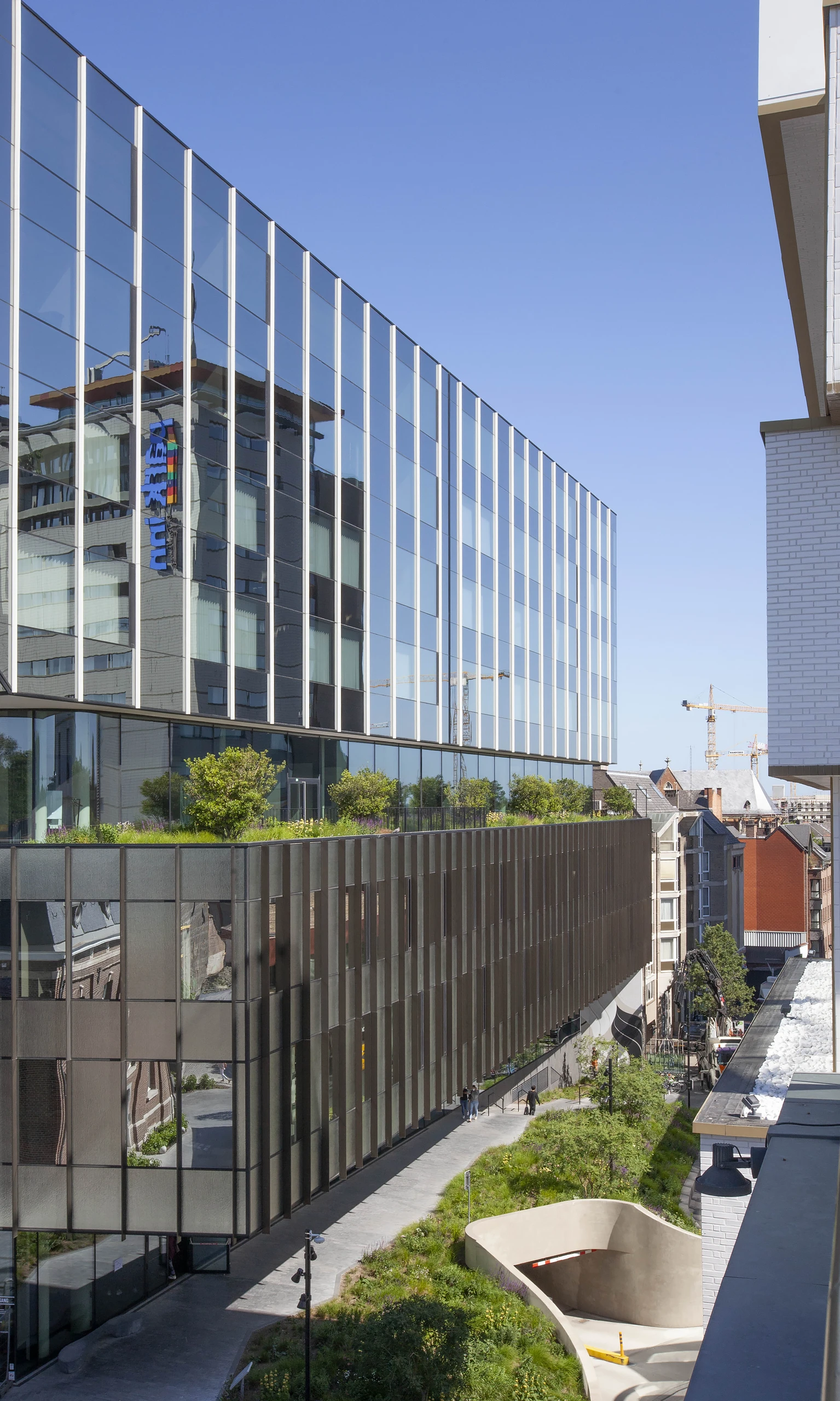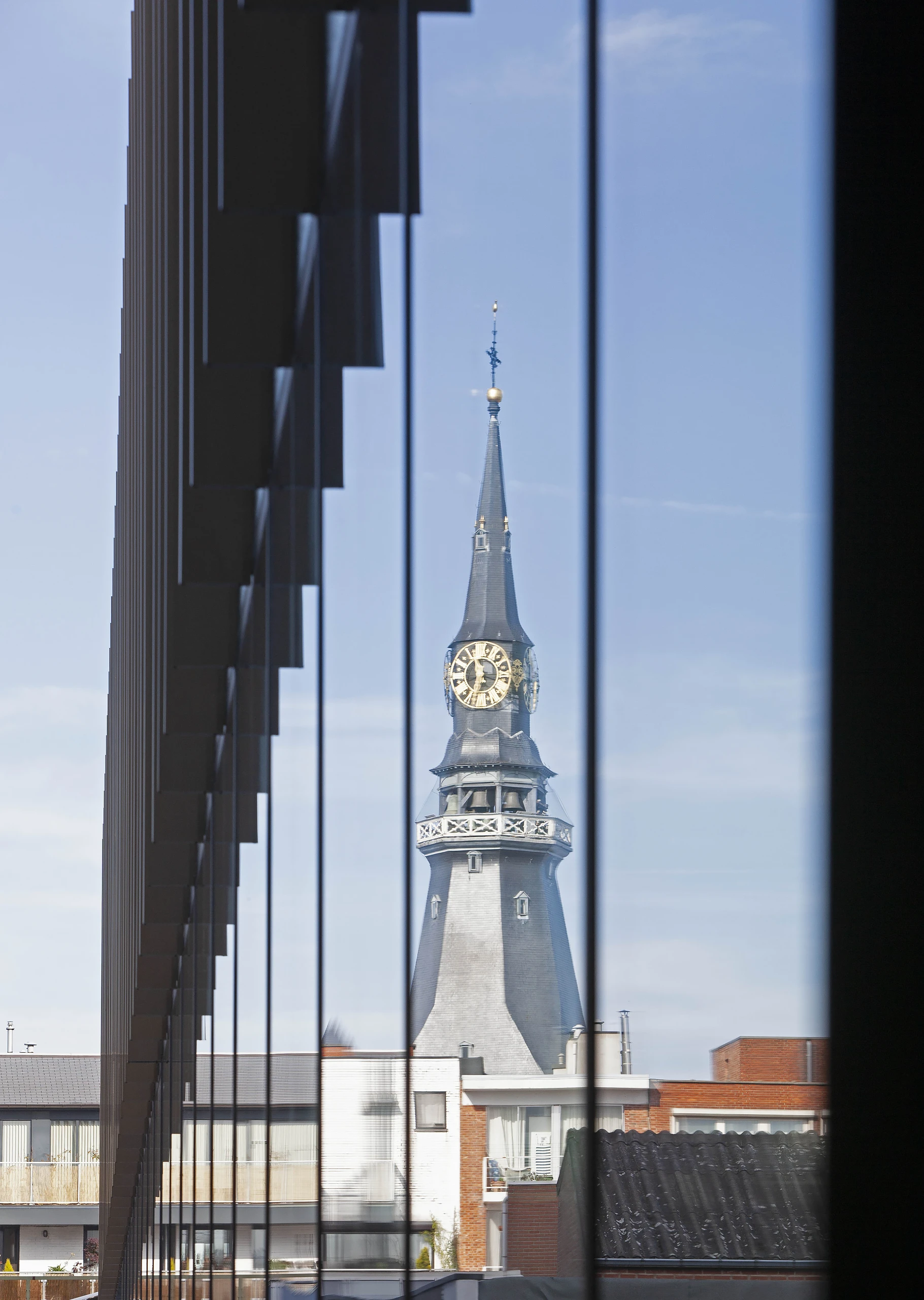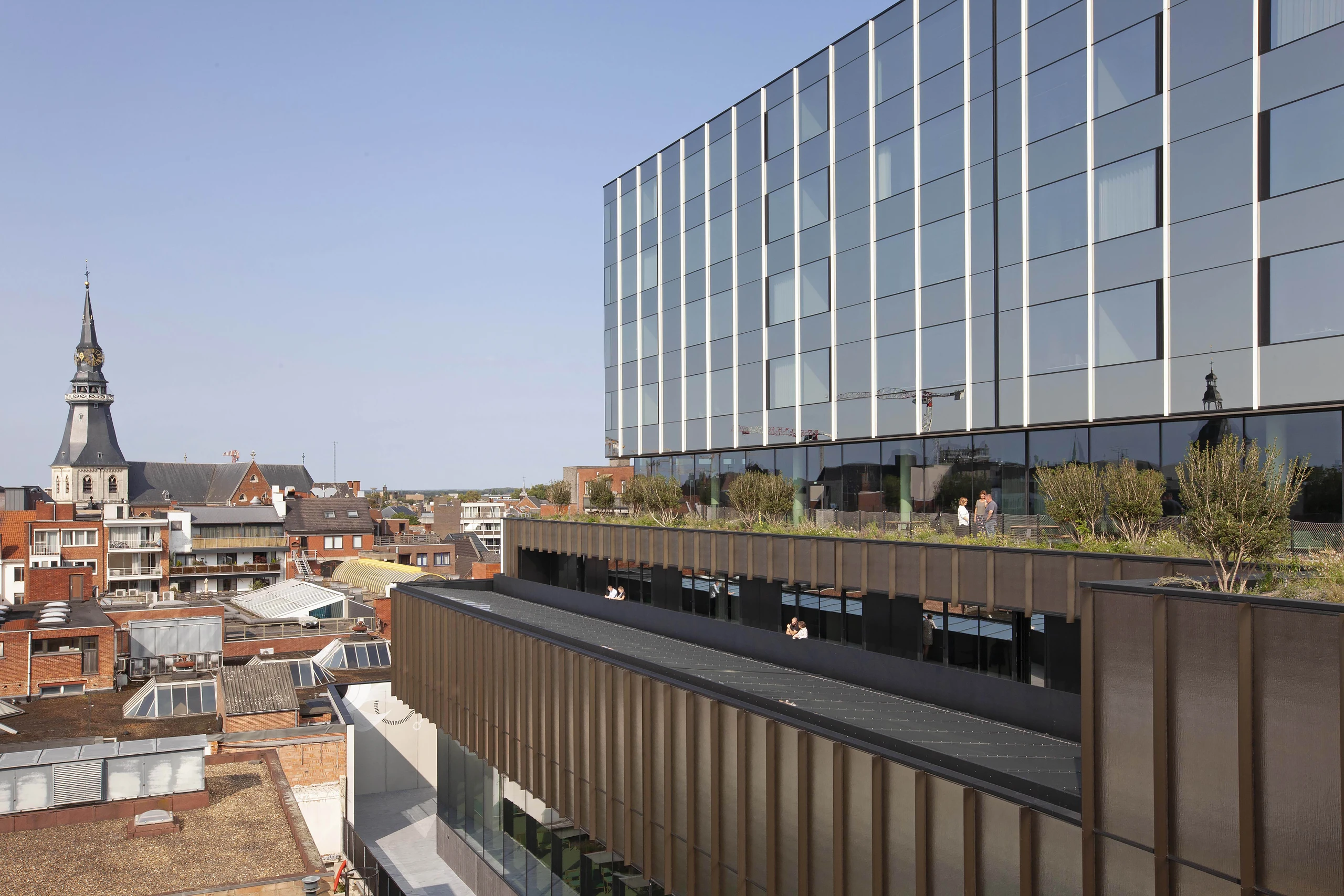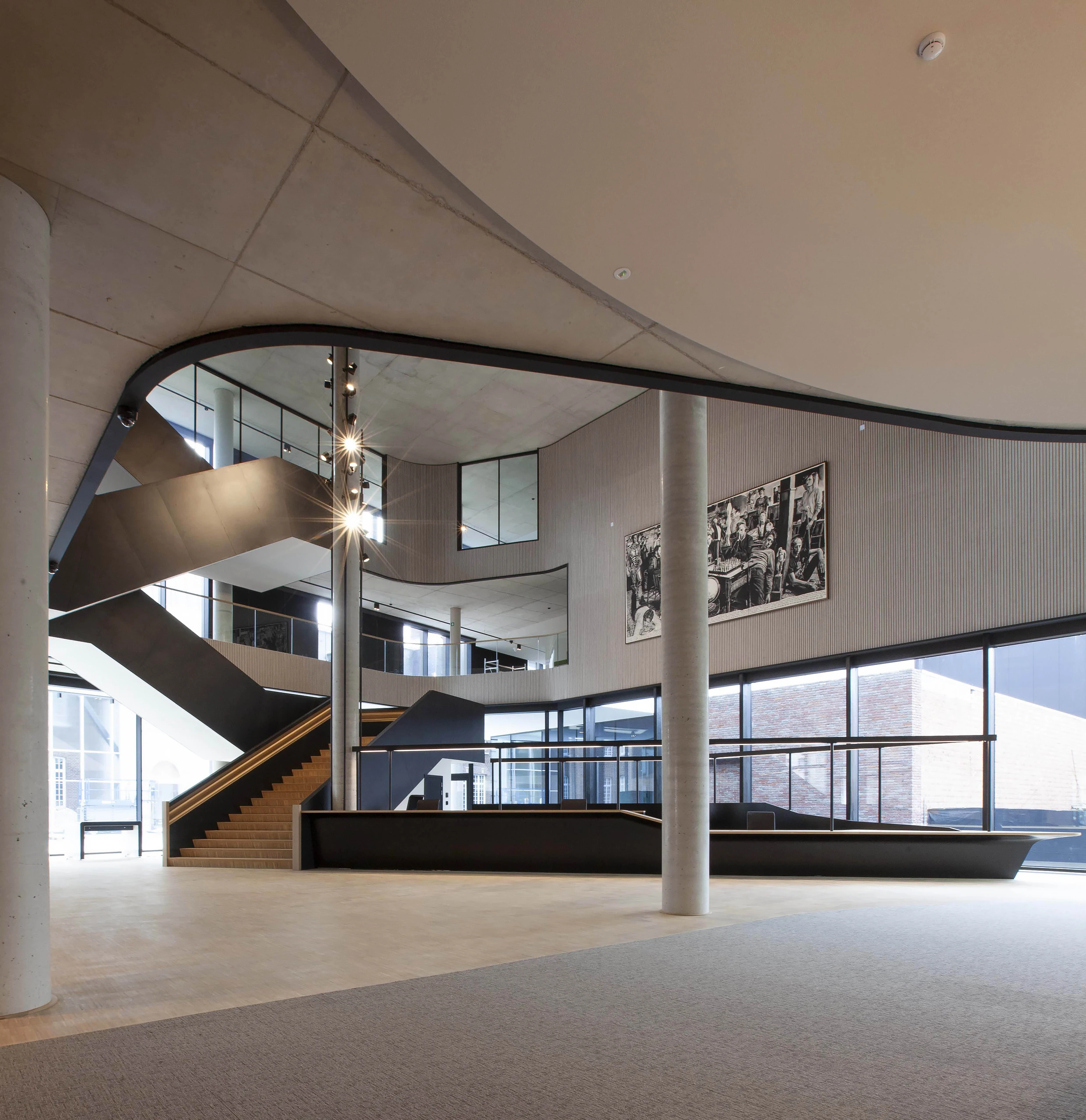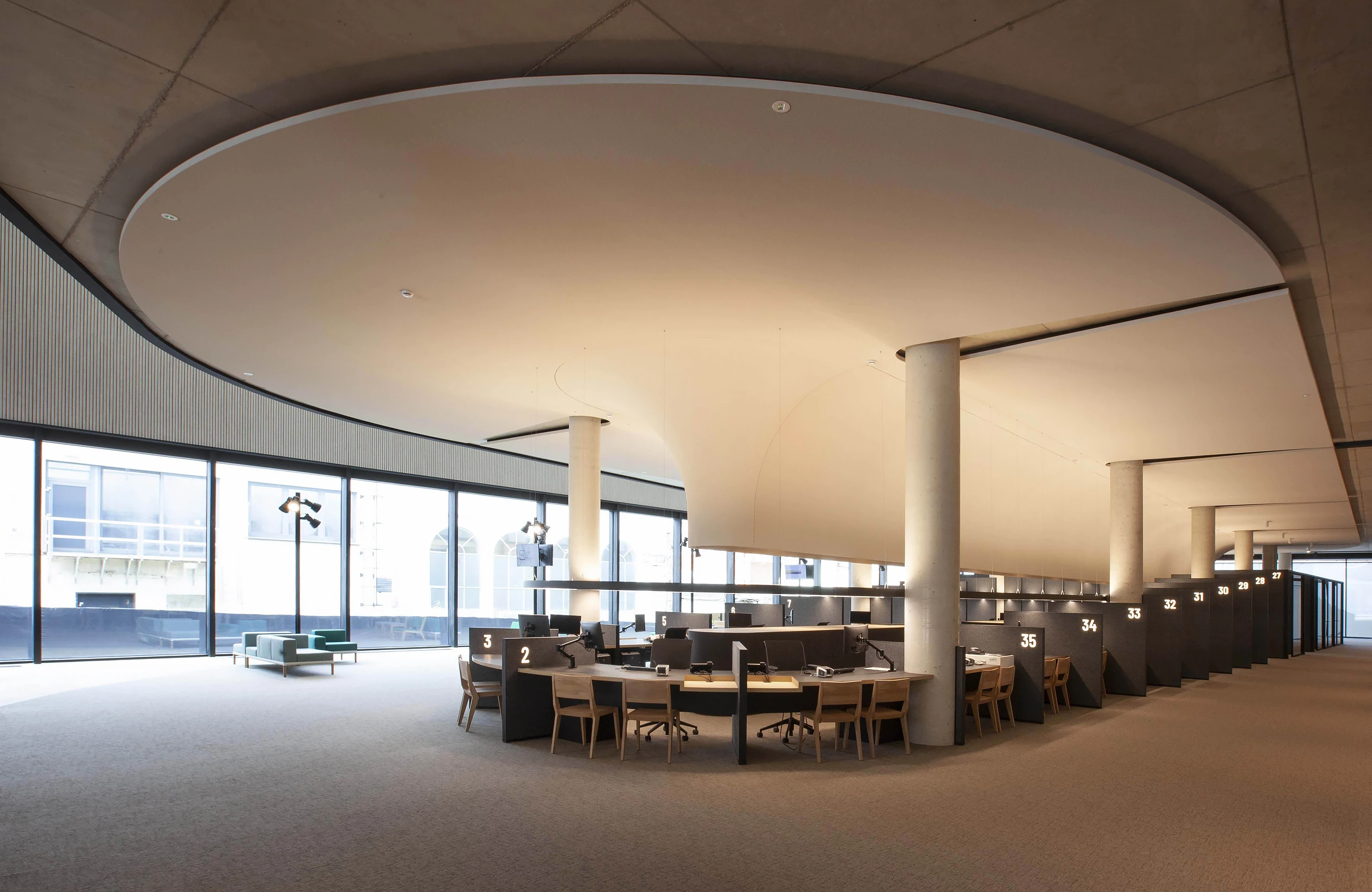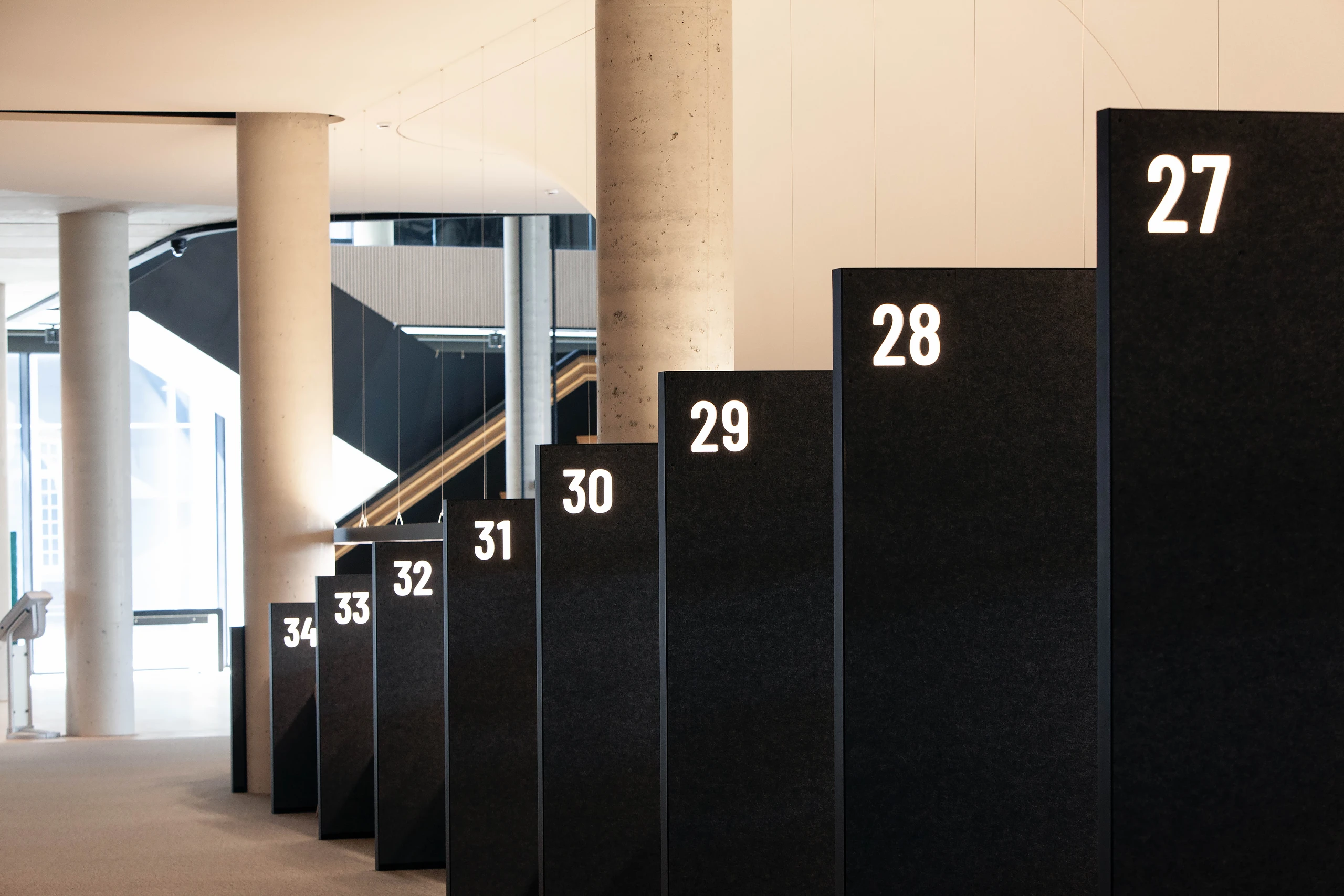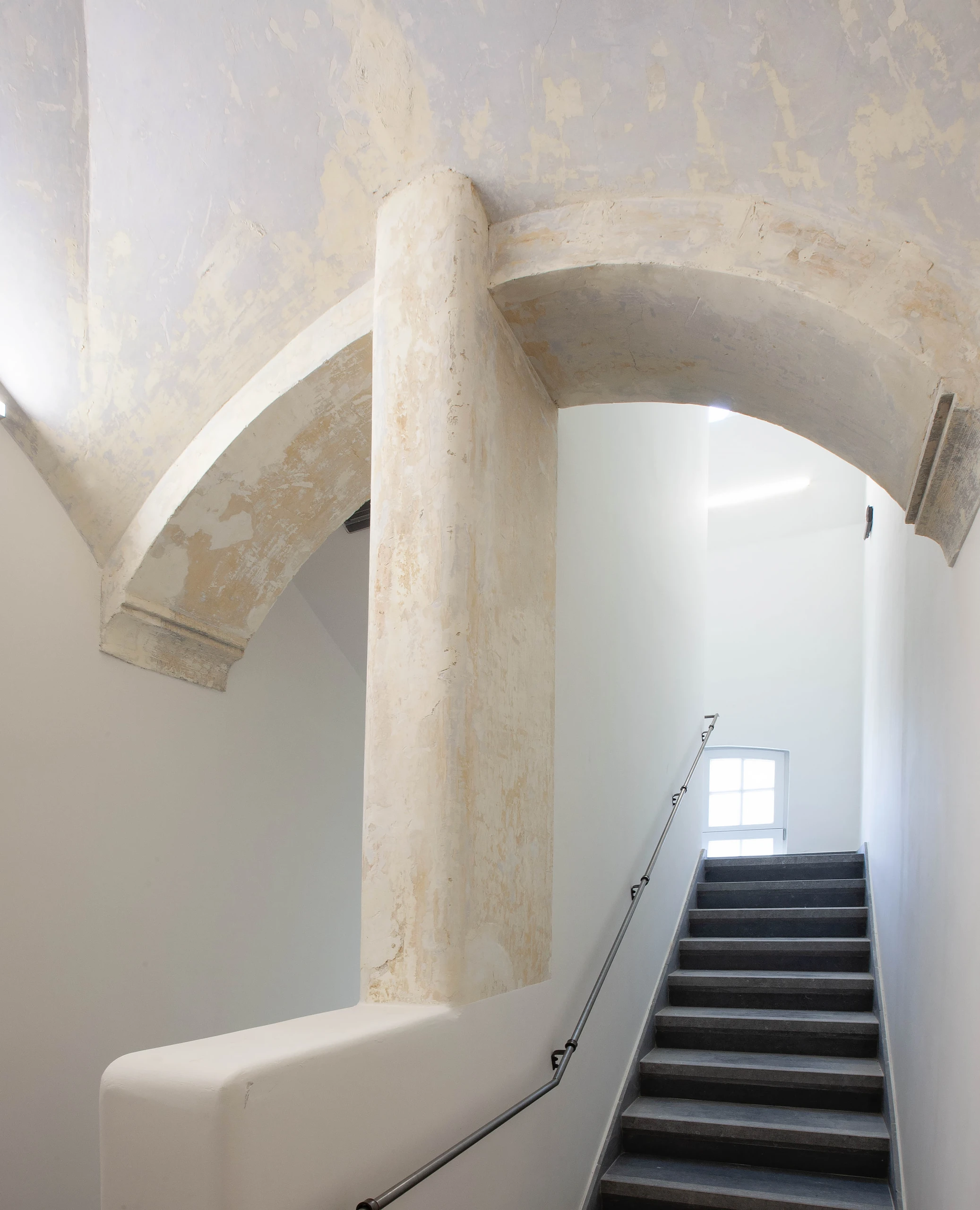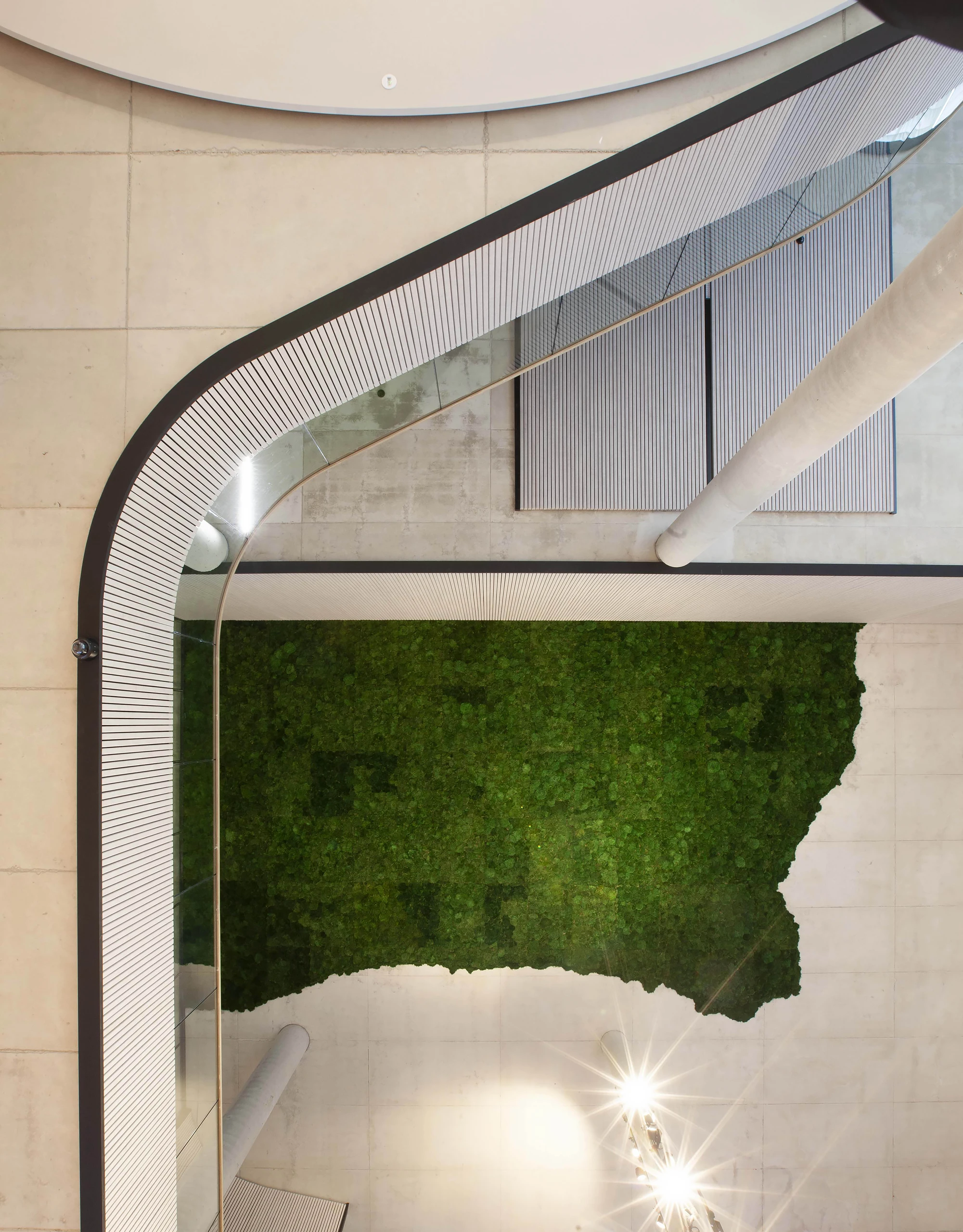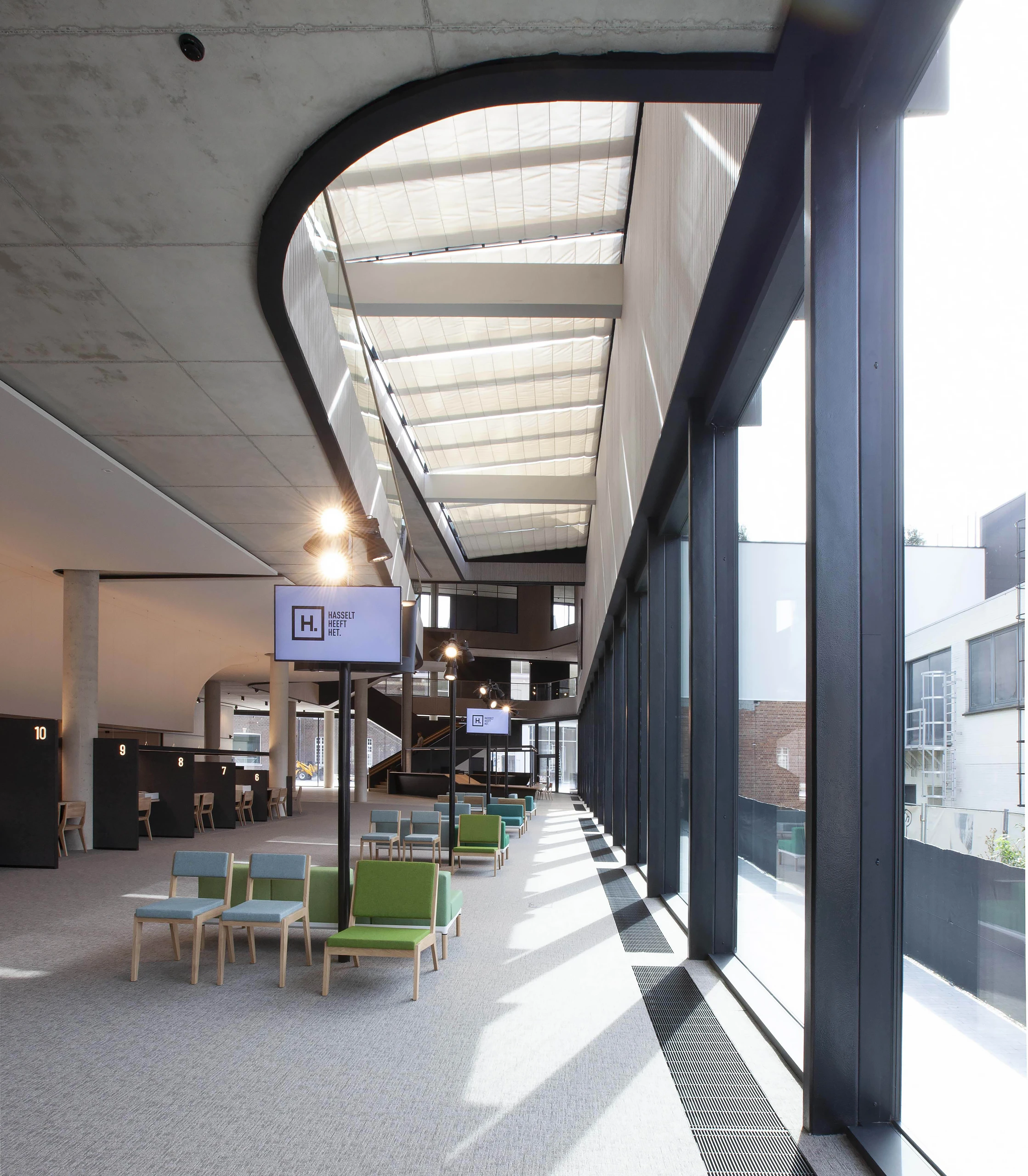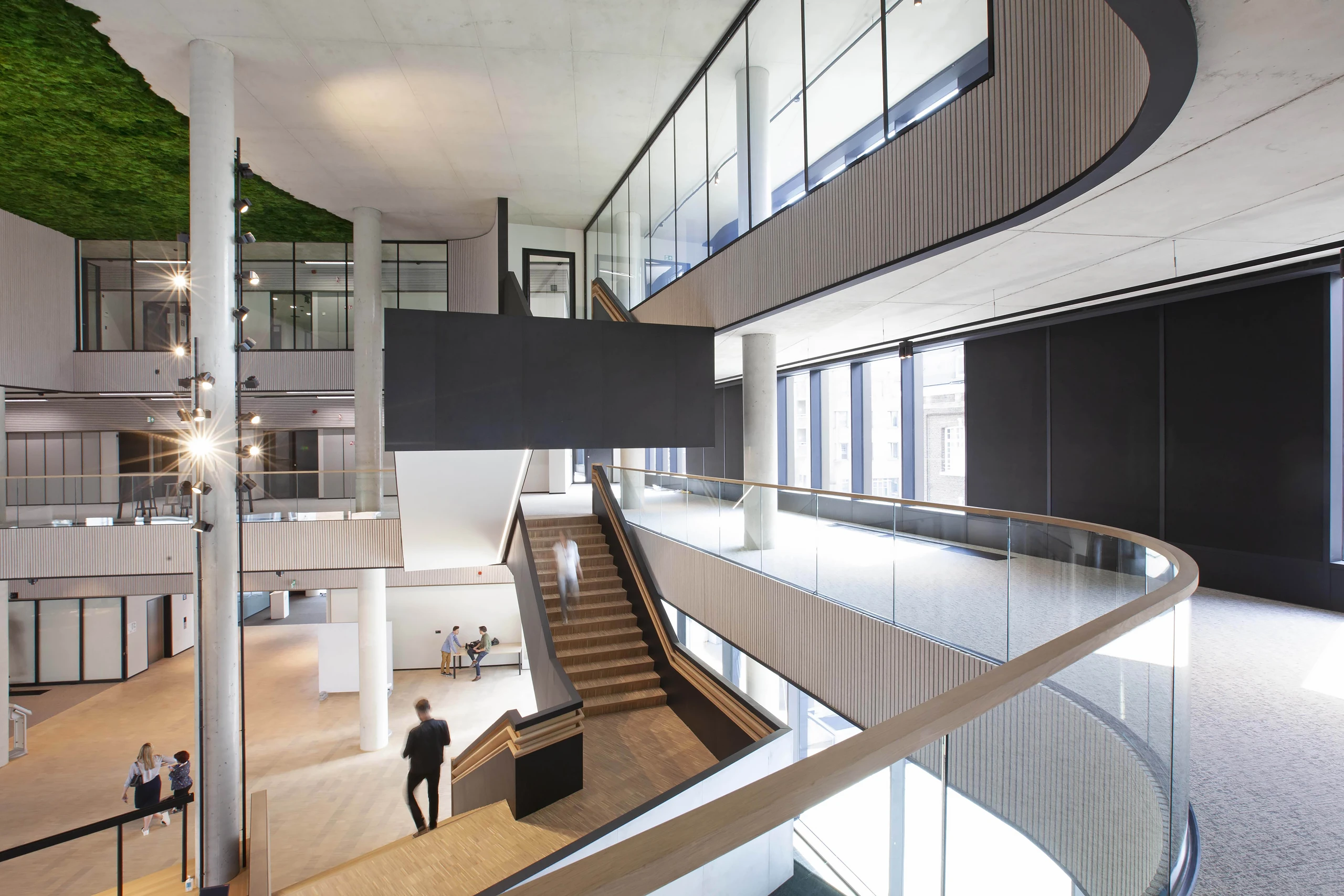- Location: Hasselt, Belgium
- Program: New City Hall of Hasselt
- Area: 24.000 m²
- Year: 2018
- Status: Realized
- Link: http://www.stadhuis2018.be
- Label: BEN-gebouw, BREEAM excellent
Town hall ‘t Scheep, home of the citizen
Hasselt’s new town hall is a unique combination of old and new. The renovated barracks, which, among other things, offer space for hospitality, offices, and meeting rooms, are located as an authentic facade in front of the quirky new building behind it. The new building, named ‘t Scheep (the ship) by more than 2000 Hasselaars, locates the OCMW and the various other city services under one roof. A challenging and well-considered association of past and present, a connection between the future and the past, integrated into the heart of the city, the town hall literally and figuratively gives public space back to the residents. The ground floor has been designed as a public place, completely in line with the central Limburgplein, flanked by the renovated barracks connecting to Green Boulevard. The monument’s front garden was restored to its original glory, including the original fencing. In addition, there is the new green area in St Jozefstraat, the overhanging mirror wall reflecting urban life, and the impressive roof garden on the third floor. This project not only serves as a catalyst of renewal in its immediate environment but also provides new opportunities for urban development with a clear vision for the abandoned sites where the city services were previously housed.
Urban implantation
A new meeting point
The new town hall aims to be a central “home of the citizen” functioning as a central point of contact and assembly point for the various city services. The project is therefore fully embedded in the heart of the city. The three parts – barracks, Limburgplein, and new construction – are connected with each other, are connected with the Green Boulevard that surrounds Hasselt, and with the underlying urban fabric.
The roof garden on the third floor, the location of the cafeteria, visually connects to the adjacent buildings through a gallery along which it is pleasant to stroll in summer and winter. The effect of openness and accessibility is thus literally enhanced at a higher level.
The immediate vicinity of the building has been adjusted with a view to optimizing the embedding. The back of the Inno (concept store), which opens onto the new square, has been expanded with an additional entrance. A direct connection was made with the King Albert Gallery, through a walkway around the town hall, which also serves as a patio. This patio creates a resting point in the city with an intimacy that feels southern. A key role in the story about connectivity is reserved for the sloping glass wall of the new building floating above the barracks and providing a visual link with Limburgplein when viewed from the green boulevard. In the evening, the story turns and, looking from the Limburgplein, the mirrored wall collects the lights and atmosphere of the city. The combination of renovated – existing – buildings, new elements, and targeted adjustments bring the entire urban area into the future. The new town hall, for example, does not miss its impact on the cities’ fabric and the economy and additionally gives public space back to the people of Hasselt.
Architecture
Linking the Past to the Future
The new town hall combines old and new, connecting the future and the past. The new-build volume functions as a supplement to and reinforcement of the monumental government guard barracks, which can be regarded as the front of the new-build and leads as a kind of front door to the ship-shaped volume. The barracks also create a natural connection to Green Boulevard that runs like a chain through the city.
With the barracks as a frontage and the newly constructed square as the centerpiece, the new building in the back almost naturally and organically takes its place in the whole. Not an easy task for 25,000 m2. The sloping wall of the new building leans over the underlying square and thus reflects the movement in the city and on the square, which guarantees a unique atmosphere, especially in the evenings. The base of the new building is in terms of color and height well in accordance with the neighboring buildings and is completely transparent in two directions. The floors above reflect both the sky and the environment, which is what determines the view from the surrounding buildings. Depending on where you are and the time of day, the volume is sometimes almost invisible from afar
Functional structure
The new building has three (semi) underground floors, a public zone of three floors, and an upper volume with five floors. The parking, the bicycle parking, and the technical areas are located in the underground parts. In the base, both the counters of the city services and those of the OCMW can be found. The key principle of the multifunctional city counter room is openness, where experience is central. Youth, sport, and culture are located one level higher, to ensure public flow is slowed down somewhat, but not blocked. A final level within the public layer houses the mayor, the general manager, and the aldermen with the cabinet staff. The public services and the offices above are separated from each other – or better: connected – by the cafeteria on the third floor, which, with the meeting accommodation surrounding the roof garden, literally and figuratively function as an open meeting place.
The restored barracks offer space for catering, offices, meeting rooms, and the council and lecture hall and is connected to the new-build section via a parcel on the 2nd level.
The border between citizen-politics – civil service fades
Borders disappear
The roof garden serves as a link between various functions, the architecture of ‘t Scheep externalizes the blurred border between politics and civil service. But the border with the citizen is also being wiped out, with an aim to ensure optimal accessibility. The latter manifests itself both inside the building – including the multifunctional reception room – and outside the building. The new town hall, the renovated barracks, and the intervening square invite you to meet and interact. It is not without reason that the ground floor of the government guard barracks offers space for restaurants. In general, the open and accessible atmosphere of a real citizen’s home is created. A warm and safe place for employees and visitors.
Interior
Simplicity and transparency
A striking, new feature of the new building is its honesty, simplicity in material, and structure also characterizing the inside. The main purpose of that austerity is openness, transparency, and accessibility. A warm interior with earthy tones, such as wood, has therefore been chosen. Curved lines cause scattering, create variation in light and make the whole less tight. At the same time, the black curves create a certain alignment, such as the eyeliner. The three public levels are connected by an imposing staircase, which conveys the underlying philosophy of openness to the visitor. The fact that the staircase is designed as an exhibition staircase further emphasizes its connecting effect.
A monumental charcoal drawing by Rinus van de Velde catches the eye in the central hall, based on the Cambrinus popular café in Hasselt. It establishes a direct relationship between the popular and the bourgeoisie, characteristic of a cross-section of society. Furthermore, the town hall will also be able to offer a platform for other and more local artists in the future.
New ways of working
The new town hall stands for the new way of working, the way of working of the future. Contact and transparency are key. Open spaces such as the reception area, and formal and informal meeting places such as the cafeteria with a roof garden, go hand in hand with private cockpits for those looking for privacy.
The new working environment is inspiring and liberating, as a catalyst for the visionary ideas that breathe oxygen into the city. To guarantee sufficient discretion, much attention has been paid to acoustics. The story of collaboration has only just begun and the impetus has been given according to the new ways of working. The building is designed in such a flexible way, to make sure new work typologies can be inserted or adapted later.
Sustainability
Striking for a glass volume, the new building is almost energy neutral. To achieve this, particular attention was paid to making the glass structure possible. The techniques used are not spectacular, but efficient. Solar panels on the roof and geothermal installation ensure the supply of renewable energy. The building has therefore achieved the BREEAM Excellent certificate.
A core feature of the new building is flexibility. Office spaces can easily be added or omitted, or get a completely different function. Therefore, the design not only responds to any future needs but also provides the city services with the necessary lead time to quietly expand their operation at the new location.
However, sustainability is not only considered in terms of energy. Material choices were based on sustainability and recyclability. Wood and felt predominate and at the same time ensure pleasant acoustics.
The Hasselt town hall profiles itself as a combination of heritage and modern architecture that is fully integrated into the existing urban fabric. For this, a non-obvious spread between tradition and innovation was made. Boldly focused on the future but with respect for the past and the familiar.
Project in collaboration with Jaspers-Eyers Architects and Architectenbureau Michel Janssen

